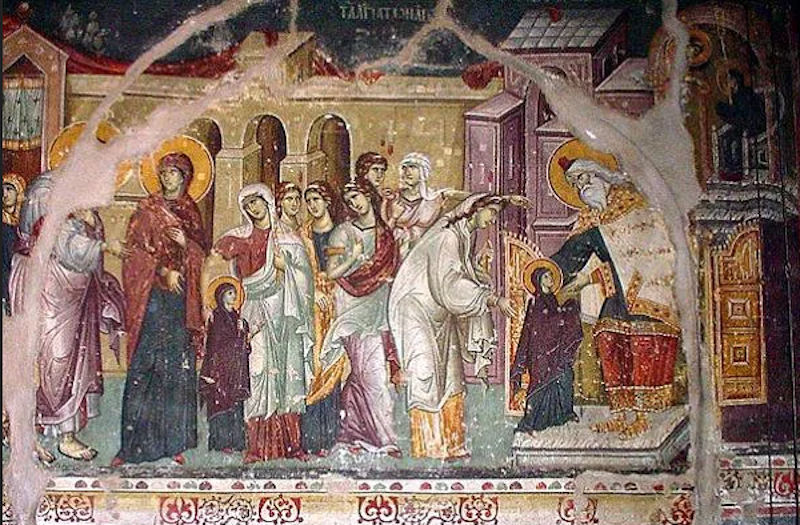
It seems thousands of years removed from us, but it was not so very long ago that life was marked out by religious feasts. Although everyone went to church, not everyone, of course, knew the exact contents of each celebration. For many, perhaps even the majority, the feast was above all an opportunity to get a good sleep, eat well, drink and relax. And nevertheless, I think that each person felt, if not fully consciously, that something transcendent and radiant broke into life with each feast, bringing an encounter with a world of different realities, a reminder of something forgotten, of something drowned out by the routine, emptiness and weariness of daily life.
Consider the very names of the feasts: Entrance into the Temple, Nativity, Epiphany, Presentation, Transfiguration. These words alone, in their solemnity, their unrelatedness to daily life and their mysterious beauty awakened some forgotten memory, invited, pointed to something. The feast was a kind of longing sigh for a lost but beckoning beauty, a sigh for some other way of living.
Our modern world, however, has become monotonous and feastless. Even our secular holidays are unable to hide this settling ash of sadness and hopelessness, for the essence of celebration is this breaking in, this experience of being caught up into a different reality, into a world of spiritual beauty and light. If, however, this reality does not exist, if fundamentally there is nothing to celebrate, then no manner of artificial uplift will be capable of creating a feast.
Here we have the feast of the Entrance of the Mother of God into the Temple. Its subject is very simple: a little girl is brought by her parents to the temple in Jerusalem. There is nothing particularly remarkable about this, since at that time it was a generally accepted custom and many parents brought their children to the temple as a sign of bringing them into contact with God, of giving their lives ultimate purpose and meaning, of illumining them from within through the light of higher experience.
But on this occasion, as the service for the day recounts, they lead the child to the “Holy of Holies,” to the place where no one except the priests are allowed to go, the mystical inner sanctum of the temple. The girl’s name is Mary. She is the future mother of Jesus Christ, the one through whom, as Christians believe, God himself came into the world to join the human race, to share its life and reveal its divine content. Are these just fairy tales? Or is something given to us and disclosed here, something directly related to our life, which perhaps cannot be expressed in everyday human speech?
Here was this magnificent, massive, solemn temple, the glory of Jerusalem. And for centuries it was only there, behind those heavy walls, that a person could come into contact with God. Now, however, the priest takes Mary by the hand, leads her into the most sacred part of the Temple and we sing that “The most pure Temple of the Savior is led into the temple of the Lord.” Later in the Gospels Christ said, “destroy this temple and in three days I will raise it up,” but as the Evangelist added, “He spoke of the temple of His Body” (Jn 2: 19, 21).
The meaning of all these events, words and recollections is simple: from now on man himself becomes the temple. No stone temple, no altar, but man — his soul, body and life — is the sacred and divine heart of the world, its “holy of holies.” One temple, Mary — living and human — is led into a temple made of stone, and from within brings to completion its significance and meaning.
With this event religion, and life even more so, undergoes a complete shift in balance. What now enters the world is a teaching that puts nothing higher than man, for God Himself takes on human form to reveal man’s vocation and meaning as divine. From this moment onward man is free. Nothing stands over him, for the very world is his as a gift from God to fulfill his divine destiny.
From the moment the Virgin Mary entered “the Holy of Holies,” life itself became the Temple. And when we celebrate her Entrance into the Temple, we celebrate man’s divine meaning and the brightness of his high calling. These cannot be washed away or uprooted from human memory.
Source: Pemptousia